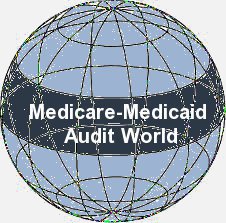 Depending on a doctor’s opinion as to the severity of a patient’s medical condition, a hospital may either provide the patient with services after he or she is admitted to the hospital (inpatient services) or without the patient being admitted (outpatient services). Although many of the services are the same, the hospital is paid more if the patient is admitted than if the services are provided on an outpatient basis.
Depending on a doctor’s opinion as to the severity of a patient’s medical condition, a hospital may either provide the patient with services after he or she is admitted to the hospital (inpatient services) or without the patient being admitted (outpatient services). Although many of the services are the same, the hospital is paid more if the patient is admitted than if the services are provided on an outpatient basis.
During the last few years, CMS’ Recovery Audit Contractors (RACs) have determined that millions of dollars paid to hospitals for inpatient treatment should be refunded to CMS because although the patient needed the medical services provided, the services should have been provided on an outpatient basis. Although most people might think that the result of the hospital’s mistaken classification would simply be for the hospital to repay Medicare the difference between the amount it was paid for inpatient services and the amount that it would have been paid for the services on an outpatient basis, CMS has a different view. According to CMS, because the hospital submitted a bill for what was later determined to be unnecessary inpatient services, the hospital is entitled to no payment for its services.
 On November 1, 2012, the American Hospital Association and four individual hospitals filed a lawsuit in the United States District Court for the District of Columbia against Kathleen Sebelius, the Secretary of the Department of Health and Human Services, in an attempt to overturn this unreasonable policy and to force CMS to pay hospitals for the legitimate outpatient services provided. While the hospital’s position is undoubtedly fair and reasonable, their lawsuit may not succeed.
On November 1, 2012, the American Hospital Association and four individual hospitals filed a lawsuit in the United States District Court for the District of Columbia against Kathleen Sebelius, the Secretary of the Department of Health and Human Services, in an attempt to overturn this unreasonable policy and to force CMS to pay hospitals for the legitimate outpatient services provided. While the hospital’s position is undoubtedly fair and reasonable, their lawsuit may not succeed.
Will CMS’ Broad Power to Administer the Medicare Program Defeat the Hospitals?
There is no doubt that Congress has given CMS broad powers to enact rules and regulations governing the operation of the Medicare Program. CMS has used that  authority to promulgate thousands of regulations and policies to govern, among other things, who is eligible to participate in the Medicare program, what benefits the program will provide, the amounts to be paid for services and what hospitals and other providers must do to be paid. According to 42 C.F.R. § 424.32(a)(1), in order for a hospital or provider to be paid:
authority to promulgate thousands of regulations and policies to govern, among other things, who is eligible to participate in the Medicare program, what benefits the program will provide, the amounts to be paid for services and what hospitals and other providers must do to be paid. According to 42 C.F.R. § 424.32(a)(1), in order for a hospital or provider to be paid:
A claim must be filed with the appropriate intermediary or carrier on a form prescribed by CMS in accordance with CMS instructions.
 Medicare-Medicaid Audit World
Medicare-Medicaid Audit World











